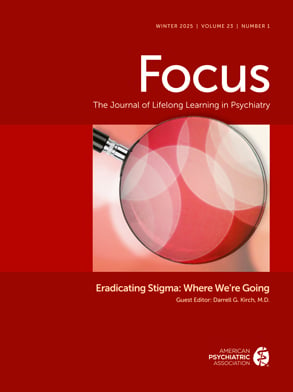Studies have continued to demonstrate effectiveness for CBT and for interpersonal therapy (IPT) in both individual and group settings. Increasing attention is being given to the possibility that certain patients with bulimia nervosa and binge eating disorder may be effectively treated using “self-care,” i.e., self-management strategies using a variety of professionally written CBT-oriented manuals (
38–
43) or online or CD-ROM-based programs (
39). In stepped care programs in which other clinical considerations such as complexity and/or severity are not overriding, such self-care strategies may be appropriately tried as a first line of intervention. A study comparing supervised self-help with CBT actually found higher remission rates for self-help than for CBT, but many patients evidently accessed additional treatment resources (
38). Another study comparing the efficiency of manual-based self-help with fluoxetine, self-help and fluoxetine in combination, and placebo in outpatient women with bulimia nervosa found that both fluoxetine and the self-help manual were effective in reducing the frequency of target eating behaviors and, furthermore, acted additively with the best outcome occurring in the group receiving both active treatments (
44). However, limitations of self-help or supervised self-help approaches have been evident in other studies. For example, in a study comparing the relative efficacy of fluoxetine with guided self-help in primary care settings, a majority of patients did not complete the trial. Guided self-help appeared ineffective, whereas treatment with fluoxetine was associated with better retention and better symptomatic improvement (
45). Newer studies are beginning to examine specific factors in self-help programs that may be effective. In one study that compared a self-help manual based on CBT with a control manual focusing on self-assertion skills and with a waiting list control, both manuals showed significant benefit, with no particular advantage for the CBT-based manual over the control manual (
43).
With regard to other psychosocial interventions for bulimia nervosa, a 20-week course of dialectical behavior therapy focusing on training in emotion regulation skills resulted in significant improvement in bingeing and purging behavior compared with a waiting list control group (
46). In the first dismantling study of its type for bulimia nervosa, cognitive therapy either alone or in combination with nutritional therapy was more effective than nutritional therapy alone or a control support group (
47). In a study comparing individual with group CBT for patients with bulimia nervosa, significantly more patients became abstinent immediately following individual treatment, but this difference was no longer evident at follow-up, at which time results of the two treatments were essentially identical (
48).
Studies of bulimia nervosa patients who fail to respond to an initial course of CBT have examined the potential utility of subsequent IPT or medication management. Dropout rates were high for both treatments, and abstinence rates of 16% for those assigned to IPT and 10% for those assigned to medication suggest that offering lengthy sequential treatments appears to have little value (
49). However, in a different controlled study, 13 patients failing CBT who were then assigned to fluoxetine did considerably better than the 9 assigned to placebo, at least with respect to achieving substantial reductions in the frequency of days of both binge eating and purging (
50).
With regard to relapse prevention, in patients successfully treated with CBT no differences were found between those subsequently offered follow-up only or a crisis intervention model consisting of additional visits if they became symptomatic. Because none of the 30 subjects who relapsed during the follow-up sought additional treatment visits, it appears ineffective to simply tell patients with bulimia nervosa who appear to have been successfully treated to return if they develop additional problems (
51).

